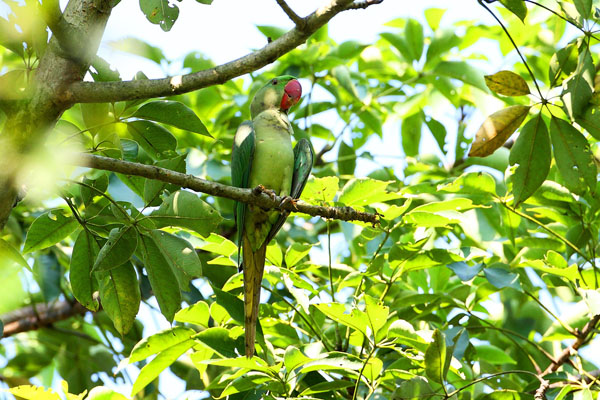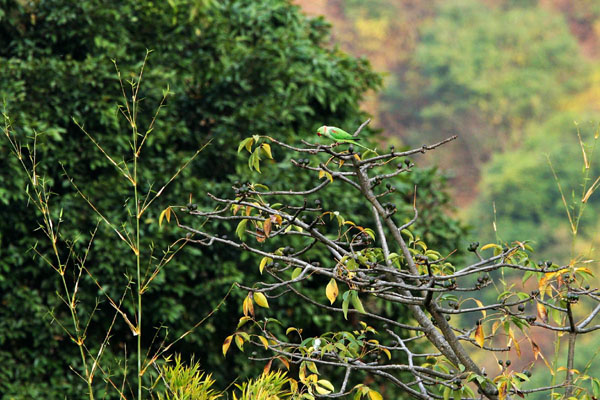Palaeornis eupatria
IUCN
LCBasic Information
Scientific classification
- name:Palaeornis eupatria
- Scientific Name:Palaeornis eupatria,Alexandrine Parakeet,Psittacula eupatria (Linnaeus, 1766),Psittacus Eupatria Linneaus, 1766,Alexan Parrot
- Outline:Climbing birds
- Family:Psittaciformes
Vital signs
- length:56-62cm
- Weight:198-258g
- lifetime:40-50years
Feature
Asia's largest parakeet
Distribution and Habitat
There are records of them in western Yunnan in China, and they have been introduced to Hong Kong. They are found abroad in Afghanistan, South Asia and Southeast Asia.
Most of them live in various dry and humid places below 900 meters above sea level, including forests, crop areas, mangroves, coconut plantations, etc., and occasionally in urban suburbs, parks, and gardens. They usually move in small groups, and will gather in large numbers when there is enough food or when resting in their habitats.
Appearance
The body is large, the head is square and large, the whole body is green, and the red shoulder spots distinguish it from the red-collared green parrot with similar appearance. The male bird has a blue pillow, narrow black cheek stripes extending to the wide pink collar on the side of the neck; the female bird has a green head and a long tail, which is blue with a yellow tip. The iris is yellow, the beak is red, the wax film is blue, and the feet are flesh-colored.
Details
Alexandrine parrots look a bit like ring-necked parrots, but are much larger in size and have obvious red spots on their wings. They have good ability to learn to talk and are gentle by nature. They can be trained to learn some tricks in captivity and have many color variants. They live in various tropical tree-covered environments and prefer open tree-covered habitats. They move in pairs or small groups, often gather in large groups in night roosts and places with abundant food resources, and often scream during flight.

Natural food includes seeds, flowers, buds of flowering trees, nectar, fruits, grains and vegetables from the wild and farmland. The foraging time is mainly in the morning and evening. In many areas, the main food of Alexandrine parrots is crops, causing serious losses to farmers.
The breeding season is about November-April; if you buy artificially bred birds for breeding, it is not difficult. Provide a sturdy nest box. The higher the nest box is, the better, and the depth should be deeper. Alexandrine parrots are very dedicated parents. After a nest of chicks is born, they are usually well cared for by their parents. During the breeding period, the parents must provide sufficient food. Usually, they enter the breeding period in February. A nest of 3-4 eggs is laid. They hatch after about 28 days, and the feathers grow after 7 to 8 weeks. Hand-raised Alexandrine parrot chicks can become very good pets. They have a gentle personality and a large body. Hand-raised birds are quiet and smart. They love to play with their owners. Their speaking ability is relatively good among Asian parakeets. Artificially bred birds do not need to spend too much time adapting to the new environment and the owner. After adapting to the environment, they are very strong and have strong vitality. They are quite active parrots in the aviary. They should not be mixed with other species. They have strong biting power. It is best to provide several toys and fresh branches for them to bite and play.

It is common to capture wild Alexandrine parrots and trade them in bird markets. The population in Sri Lanka is now very rare due to heavy hunting, with only a small population in the north. In Thailand, due to excessive capture of young birds, the number of parrots has also plummeted. This situation also occurs in the neighboring countries of China and the South China Sea.
Listed in China's "National Key Protected Wildlife List" (February 5, 2021) Level 2








